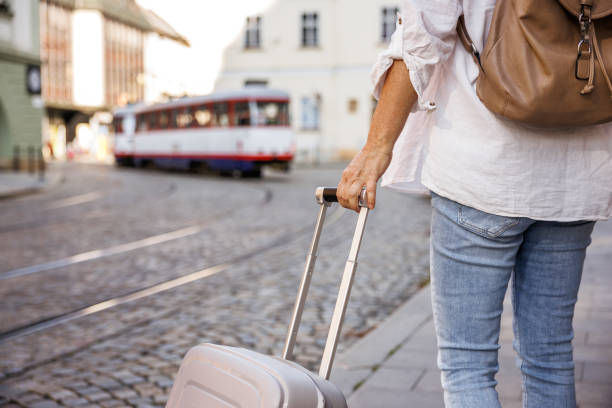How to Stay Safe While Traveling Solo: Tips for Women and Men
Solo travel is an incredible way to experience the world on your own terms—whether you’re seeking adventure, self-discovery, or just a break from your usual routine. While solo travel can be liberating and rewarding, it’s essential to stay mindful of safety. Being proactive about your well-being will allow you to enjoy your trip without unnecessary stress or concern.
Whether you’re a woman traveling solo or a man on your own adventure, safety should always be a priority. Here are some practical tips for solo travelers, covering everything from staying aware of your surroundings to choosing safe accommodations and destinations.
1. Choose Safe Destinations
One of the first steps to staying safe while traveling solo is choosing destinations with a reputation for being welcoming and safe. While some areas are known for being traveler-friendly, others may have higher crime rates or present other challenges for solo travelers.
How to Choose Safe Destinations:
- Research: Look up recent travel advisories from reliable sources like the U.S. Department of State or the UK Foreign and Commonwealth Office. You can also check forums like TripAdvisor or Reddit for reviews from other solo travelers.
- Popular and well-traveled destinations: Opt for countries or cities that are known for being safe for tourists, such as Iceland, New Zealand, Japan, or Canada.
- Avoid risky areas: Steer clear of regions with high political instability, civil unrest, or recent natural disasters.
- Solo traveler communities: Seek recommendations from solo traveler blogs and online communities, where you can find helpful tips and safety advice from others.
Tip: Some countries (e.g., Japan, Switzerland, Norway) are particularly known for their safety and well-maintained infrastructure, making them ideal for first-time solo travelers.
2. Stay Aware of Your Surroundings
Staying aware of your environment is crucial when traveling solo. Keeping your wits about you will help you avoid potential risks and make you less of a target for opportunistic criminals.
How to Stay Aware:
- Trust your instincts: If something feels off, trust your gut and remove yourself from the situation.
- Stay alert in crowds: Public spaces can attract pickpockets, especially in busy tourist areas or on public transport. Keep your belongings close and be mindful of who’s around you.
- Limit distractions: Avoid excessive use of your phone or looking down at maps in public. This can make you more vulnerable to being distracted or targeted.
- Stay sober and alert: Drink responsibly and keep an eye on your beverages, especially in unfamiliar places.
Tip: Consider downloading safety apps, like bSafe or Watch Over Me, which allow you to share your location with trusted contacts or send alerts in case of emergencies.
3. Protect Your Personal Belongings
When you’re traveling solo, your personal items, such as passports, money, and electronics, become even more valuable. Protecting your belongings not only helps you avoid theft but also ensures you can continue your trip smoothly.
How to Protect Your Belongings:
- Use anti-theft bags: Invest in a travel bag with anti-theft features, like hidden zippers, cut-proof straps, and RFID-blocking compartments to protect your credit card information.
- Separate your money: Keep some cash and your main cards in different places—e.g., one in your wallet and another in a secure inner pocket or hotel safe.
- Lock your bags: Always lock your luggage, even when you’re in your hotel room or on public transportation.
- Use a money belt or neck pouch: For important documents like your passport, use a discreet money belt or neck pouch that you can wear under your clothing.
- Secure your electronics: Don’t leave laptops or phones unattended in public places. Use a lock or a cable if you need to secure them temporarily.
Tip: If you’re traveling to places with a higher risk of theft, consider wearing a hidden money belt or anti-theft backpack, which can make it harder for thieves to snatch your belongings.
4. Choose Safe Accommodations
Where you stay can greatly impact your safety while traveling solo. Whether you’re booking a hotel, hostel, or Airbnb, ensure that your accommodations provide a safe and comfortable environment.
How to Choose Safe Accommodations:
- Read reviews: Check multiple sources for reviews on safety, such as Google, TripAdvisor, or Booking.com. Look for comments on things like the area, security, and management responsiveness.
- Consider location: Choose accommodations in well-lit, busy areas, ideally near public transportation or within walking distance of major attractions. Avoid staying in isolated areas or neighborhoods with high crime rates.
- Check amenities: Look for places that have 24/7 reception, a safe for valuables, and good security practices like key card access or locked rooms.
- Look for women-friendly accommodations: Some hostels or hotels cater specifically to female travelers, offering female-only dorms, safe spaces, or extra security measures.
Tip: Use platforms like Airbnb and Booking.com to find accommodations with ratings for safety. Hostelworld is a great resource for finding social, budget-friendly hostels with a good reputation.
5. Stay Connected with Family and Friends
Keeping in touch with family or friends back home not only offers you peace of mind but also ensures someone knows your whereabouts in case of emergencies.
How to Stay Connected:
- Share your itinerary: Before you leave, send your full itinerary (including accommodation details) to a trusted friend or family member. Check in with them regularly to update your whereabouts.
- Use location-sharing apps: Apps like Google Maps, Find My Friends, or WhatsApp allow you to share your real-time location with loved ones.
- Set check-in times: Agree on times to check in via phone or message. If you miss a check-in, your family or friend can follow up to ensure your safety.
Tip: In case of emergency, consider downloading an app like bSafe, which has a “Follow Me” feature that lets loved ones track your journey in real-time.
6. Be Mindful of Transportation Choices
Getting around safely is crucial, especially when you’re solo. Whether you’re using public transport, taxis, or rideshare apps, always choose transportation options that prioritize safety.
How to Stay Safe Using Transportation:
- Use trusted services: Always opt for well-known and trusted transportation services, like Uber, Lyft, or official taxis. Avoid accepting rides from strangers.
- Check the license plate and driver details: If using rideshare services, double-check the car’s make, model, and license plate number before getting in, and confirm the driver’s identity through the app.
- Be cautious with public transportation: On crowded buses or trains, keep your belongings close and avoid engaging with overly aggressive or intoxicated individuals.
- Night-time transport: If traveling at night, take extra care with your transport choices, as well-lit, public options are usually the safest.
Tip: Avoid walking alone at night in unfamiliar areas, and always opt for a taxi or rideshare if you’re traveling after dark.
7. Trust Your Instincts
No matter how much preparation you do, sometimes the best defense is simply listening to your intuition. If you feel uncomfortable or uneasy about a situation, trust your gut and take action.
How to Trust Your Instincts:
- If it doesn’t feel right, leave: If you’re walking down a street and something feels off, don’t hesitate to turn around and go in the opposite direction.
- Avoid confrontation: If you’re in a situation where you feel threatened, it’s better to walk away or seek help rather than escalate things.
- Be cautious with new acquaintances: While meeting new people is one of the joys of travel, take time to assess whether they feel trustworthy. Keep public interactions brief until you feel comfortable.
Tip: Practicing mindfulness and staying calm can help you better read a situation and make quick decisions based on your instincts.
8. Learn Basic Self-Defense
While it’s essential to stay alert and cautious, it’s also empowering to know how to protect yourself if needed. Taking a self-defense class before you travel can boost your confidence and help you react quickly in emergencies.
How to Prepare:
- Take a self-defense class: Look for local martial arts schools or self-defense courses that teach techniques for personal safety.
- Use everyday items as tools: Everyday items like a pen, keys, or even your phone can be used to protect yourself if you find yourself in a dangerous situation.
Tip: While physical self-defense should always be a last resort, knowing how to protect yourself can give you confidence and peace of mind.
Solo travel is one of the most rewarding experiences you can have, but safety should always be a priority. By being prepared, staying aware of your surroundings, choosing safe accommodations and destinations, and trusting your instincts, you can confidently explore the world while keeping yourself protected. Whether you’re hiking through national parks, discovering new cities, or relaxing on a beach, traveling solo opens up countless opportunities for adventure and self-growth—just be sure to make your safety a part of the journey.
Safe travels! 🌍✨


